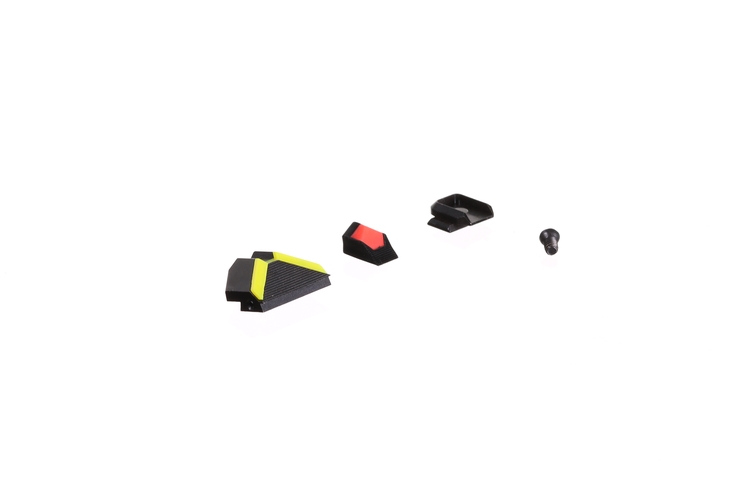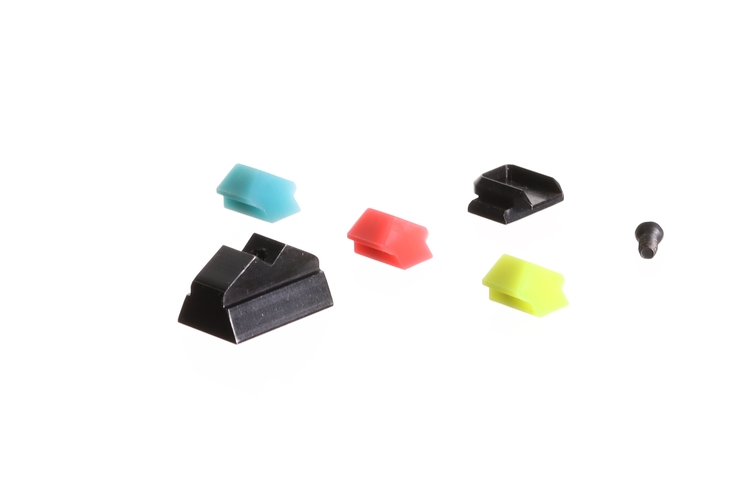History and Evolution of Iron Sights: A Journey Through Time
Introduction
Iron sights, the dependable and enduring sighting systems of firearms, have a rich history that dates back centuries. From their humble beginnings to modern-day innovations, iron sights have played a pivotal role in shooting accuracy. In this comprehensive guide, we will take a historical journey through the evolution of iron sights, shedding light on their origins, development, and the role they continue to play in the world of firearms.

The Early Beginnings
Flintlock and Muzzleloader Era
The roots of iron sights can be traced back to the early firearms of the flintlock and muzzleloader era. These early firearms featured rudimentary sighting systems, often consisting of simple notches and posts. Shooters relied on basic alignment to aim accurately.
Smoothbore Muskets
During the 17th and 18th centuries, smoothbore muskets with basic front post sights and rear notches became common among military forces. While these sights lacked precision, they were suitable for the massed volleys typical of that era.
The Age of Rifling
The Rise of Rifled Firearms
The development of rifling in firearms marked a significant turning point in the history of iron sights. Rifling, which imparted spin to the bullets, made long-range accuracy more achievable. As a result, more advanced sighting systems were needed.
Tang Sights
Tang sights, also known as Vernier sights, were introduced during the 19th century. These rear-mounted sights featured adjustable elevation and windage controls, allowing shooters to fine-tune their aim for long-range shooting.
The Transition to Military Firearms
The late 19th and early 20th centuries saw the adoption of bolt-action rifles with more advanced iron sights. These rifles featured rear aperture sights, which improved accuracy and made target acquisition quicker.
The Mauser System
The Mauser bolt-action rifle system, introduced in the late 19th century, incorporated innovative iron sights. Its rear sight, known as the “Lange Visier” or “rollercoaster” sight, allowed for precise long-range shooting.
Modern Advancements
Military and Combat Sights
World War I and World War II brought further advancements to iron sights, particularly in military and combat applications. Peep sights and adjustable rear sights became standard on many military rifles.
Tritium Night Sights
In the latter half of the 20th century, tritium night sights were introduced. These self-illuminating sights provided improved low-light visibility, a valuable feature for law enforcement and military personnel.
Iron Sights Today

Iron sights continue to have a prominent place in the world of firearms. While optical sights and red dot sights have gained popularity, iron sights remain an essential backup sighting system on many firearms.
Conclusion
The history and evolution of iron sights are a testament to human ingenuity and the drive for shooting accuracy. From humble beginnings to the precise and adjustable sights of today, iron sights have come a long way. While technology continues to advance, the reliability and simplicity of iron sights ensure they will remain a fundamental component of firearms for years to come. The OuterImpact Pyramid and Dark Diamond Sights are the pinnacle of speed, acquisition and preference.
In our next articles within this series, we will explore the different types of iron sights and provide practical insights on their use in various shooting scenarios.
This historical journey through the evolution of iron sights highlights their enduring importance in the world of firearms. Understanding their development helps us appreciate their role in shaping shooting accuracy and precision. The next evolution of iron sights are the Pyramid Sights and the Dark Diamond series.
